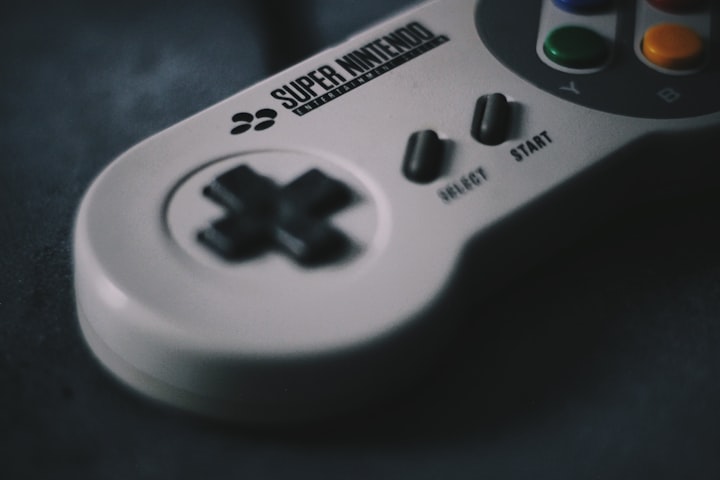The Almost-Death of Video Games
And the company that would save it
When the words “Video games” are spoken, tons of images come to mind; from Mario saving the princess to fantastical worlds that look so realistic you could almost reach out and touch them. Nostalgia for the janky consoles of the past, and bright-eyed wonder at the technological achievements of the present. But, when you hear the word “video games”, you don’t think of an industry on the brink of collapse, struggling to survive. But that’s exactly what happened in 1983.
While video games enjoyed a large popularity boom during the early 60s and 70s, due in large part to most video games being confined to arcade cabinets, it was the Magnavox Odyssey that brought the thrill of video games to the home screen in 1972. While the Odyssey, and most first-generation consoles, weren’t widely received by the average consumer, it did lay the foundation for Atari to take center stage as the dominant home console distributor, with their most popular console, the Atari Video Computer Console (later renamed the Atari 2600), taking the US market by storm. But this is where the cracks start to form.
Atari, for all the clout that it got from Pong (which was technically a clone of Tennis for Two, a game for the Magnavox Odyssey), started to lose control quickly in several ways, the first of which was the programmers leaving to create a company called Activision. Why did they leave? Simply put: they wanted recognition for their work. Its commonplace to thank programmers nowadays, but back then most programmers worked a thankless job (and unfortunately many still do).
Since the people of Acitivision was already familiar with Atari hardware, they quickly started developing games for the Atari system, much to the chagrin of Atari who would later sue and settle out of court. Even though Activision wound up paying royalties to Atari, they were still making money hand-over-fist. Many other companies slowly started to try and emulate Acitivision’s success. The unfortunate part is unlike today, where most independent or third-party studios understand that making a great game will also bring in great profits, the third-party studios of the past were only concerned with one thing: money.
Thus began a slew of clones, rip-offs, and just poor-quality games. These third-party studios produced games as such a high rate and such a low bar that people started to steer clear of the whole market. This is also the time when games like the infamous E.T. were created. Leading up to the crash, there was about 100 third-party companies producing games at a high volume, each lower quality than the last.
This was compounded by the fact that Atari was also fighting a price war on the home computer front; attempting to stay competitive with IBM and Texas Instruments. There was a legitimate argument with a lot of consumers at the time of “why would I buy a video game console when I could just by a computer that plays video games?” It was a race to the bottom, and Atari was losing big.
The combination of an over-staturated market, poor perception of quality, and lack of versatility lead Atari, and the industry at large, to a massive recession. Most of the early adopters of the home console, such as Magnavox, would abandon the industry entirely. It was heavily rumored that Atari had taken the mountain of excess stock they had of E.T. and their port of Pac-Man and buried it in a landfill because of how disgraceful and poor the product was, and how badly it reflected on them (While the copies of E.T. were eventually uncovered, no one can know for sure why they were buried). This crash also had an effect on arcades at the time, as well; many people not wanting to even set foot inside because of the rumors that were spreading about the industry at large. It seemed that the video game industry was doomed to become another 80s fad.
But, in 1986, came a small console from a Japanese company who’d only recently gotten out of the business of making toys and Hanafuda cards. With their Nintendo Entertainment System, Nintendo brought with them a familiar face from their arcade days to the home console, the spunky and determined plumber Mario! While Nintendo launched the NES with a line-up of 10 games (including games like Ice Climbers, Duck Hunt, and Excitebike), none would compare to Super Mario Bros. This would cement Nintendo as a leader in the industry, and why so many older gamers still look at Nintendo with a nostalgic reverence.
While Nintendo would go to make a good many missteps in its long career, it often gets a lot of things about video games right. This is due, in part, to the company’s constant need for innovation. This innovation would help revitalize the industry, with later titles like The Legend of Zelda and Metroid further bolstering the NES and becoming staples in their own right.
It’s hard to think about the video game industry today as a struggling industry. While there are many problems that plague the industry at large, many owe a great debt to Nintendo for helping save it. So next time you’re playing you favorite game, whether it be on a PS5 or an Xbox One Series X, spare a moment to realize just how close the industry was to collapse. And, even if you don’t like them today, spare a moment to thank Nintendo for their helping hand.







Comments
There are no comments for this story
Be the first to respond and start the conversation.